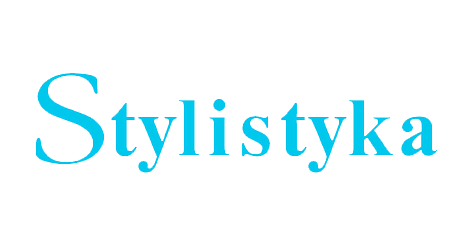Antonopoulou E. & Sinanou M., 2003: “Conversational dynamics of humour: the tele phone game in Gieek”. Journal of Pragmatics 35 (5), 741-769.
Google Scholar
Archaxis A. & Tsakona V., 2u04: “Linguistic Humor as a Means ofldentity Construction: Analysis of Data from Young Male and Female Inxeractions”. In the proceedings of the 6Ш International Conference of Greek Linguistics, 18-21 September 2003. Ret hymno: Linguistics Lab, University of Crete (). [in Greek]
Google Scholar
Archakis A. & Tsakona V., 2005: “Analyzing conversational data in GTVH terms: A new approach to the issue of identity construcxion via humor”. Humor 18 (1), 41-68.
Google Scholar
Attardo S., 2001: Humorous Texts: A Semantic and Pragmatic Analysis. Berlin: Mouton de Gruyter
Google Scholar
Brown P. & Levinson S.( 1987: Politeness: Some Universal in Language Usage. Cam bridge: Cambridge University Press.
Google Scholar
Bonaiuto M., Castellana E. & Picrro A., 2003: “Arguing and laughing: The use of humor to negotiate in group discussions”. Humor 16 (2), 183-223.
Google Scholar
Boxer D. & Cortes-Conde F., 1997: “From Bonding to Biting: Conversational Joking and Identity Display”. Journal of Pragmatics 27 (3), 275-294.
Google Scholar
Davis M., 1993: What's So Funny? The Comic Conception of Culture and Society. Chica go: The University of Chicago Press.
Google Scholar
De Fina A., 2003: Identity in Narrative. A Study of Immigrant Discourse. Amsterdam and Philadelphia: John Benjamins Publishing Company.
Google Scholar
Duszak A. (ed.), 2002: Us and Others: Social Identities across Languages, Discourses and Cultures. Amsterdam: John Benjamins, 377-400.
Google Scholar
Glenn P., 2003: Laughter in Intel action. Cambridge: Cambridge University Press.
Google Scholar
Hay J., 2001: “The Pragmatics of Humor Support”. Humor 14 (1), 55-82.
Google Scholar
Holmes J., 2000: “Politeness, Power and Provocation: How Humour Functions in the Workplace”. Discourse Studies 2 (2), 159-185.
Google Scholar
Holmes J. & Marra M., 2002a: “Over the edge? Subversive humor between colleagues and friends”. Humor 15 (1), 65-87.
Google Scholar
Holmes J. & Marra M., 2002b: “Humour as a discursive boundary marker in social inte raction”. In Duszak A. (ed.), Us and Others: Social Identities across Languages, Discourses and Cultures. Amsterdam: John Benjamins, 377-400.
Google Scholar
Kotthoff H., 20u0: “Gender and Joking: On the Complexities of Women’s Image Politics in Humorous Narratives”. Journal o f Pragmatics 32 (1), 55-80.
Google Scholar
La Fave L., Haddad J. & Maesen W, 1996: “Sup< rionty, Enhanced Self-Esteem, and Per ceived Incongruity Humour Theory”. In Chapman A. & Foot H. (eds.), Humor and Laughter. Theory, Research and Applications. New Brunswick, New Jersey: Tran saction Publishers, 63-91.
Google Scholar
Lampert M. & Ervin-Tripp S., 1998: “Exploring paradigms: fhe study of gender and sense of humor near the end of the 20th century”. In RUCH W. (ed.), The Sense of Hu mor. Explorations of a Personality Characteristic. Berlin: Mouton de Gruyter, 231-270.
Google Scholar
Lytra V., 2006 forthcoming: “Teasing in Contact Encounters: Frames, Participant Potsitions and Responses”. Multilingua 25 (4).
Google Scholar
McGhee R, 1979: Humor. Its Origin and Development. San Francisco: W. H. Freeman and Company.
Google Scholar
Mulkay M., 1988: On Humor. Its Nature and Its Place in Modern Society. Cambridge: Polity Press.
Google Scholar
NorrickN., 1993: Conversational Joking Humor in Everydav Talk Bloomington: India na University Press.
Google Scholar
Norrick N., 1994: “Involvement and Joking in Conversation” Journal of Pragmatics 22 (3/4), 409-430.
Google Scholar
Norrick N., 2004: “Humor, tellability, and conarration in conversational storytelling”. Text 24 (1), 79-111.
Google Scholar
Pike K., 1967: Language in Relation to a Unified Theory of Human Behaviour. The Hague: Mouton.
Google Scholar
Priego-Valverde B., 2004: “Humor and ‘double-bind’: responding to self-disparagmg hu mor in everyday speech”. Paper presented in the 16th Conference of the Internatio nal Society for Humor Studies, 14-18 June 2004, Dijon, Prance.
Google Scholar
PurdieS., 1993: Comedy. The Mastery of Discourse. Hertfordshire: Harvester Wheatsheaf.
Google Scholar
Raskin V., 1985: Semantic Mechanisms of Humor. Dordrecht: D. Reidel Publishing Company.
Google Scholar
Ross A., 1998: The Language of Humour. London: Routledge.
Google Scholar
Sarbin T. Sc Kitsuse J., 1994: Constructing the Social. London: Sage Publications
Google Scholar
Schifffin D., 1996: “Narrative as self-portrait: Sociolinguistic construction of identity”. Language in Society 25 (2), 167-203.
Google Scholar
Sifianou M., 2001: Politeness phenomena in England and Greece. A cross-cultural perspective. Oxford: Oxford University Press.
Google Scholar
Taylor T., & Cameron D. 1987: Analysing Conversation: Rules and Units in the Structure of Talk. Oxford: Pergamon Press.
Google Scholar
Tracy S., Myers K. & Scott C., 2002: “Humor as Organizational Sensemaking A Groun ded Multisite Analysis”. Paper presented at the 2002 National Communication As sociation convention, New Orleans.
Google Scholar
Tsakona V., 2003: “Jab lines in narrative jokes”. Humor 16 (3), 315-329.
Google Scholar
Tsakona V., 2004: “Humor in Written Narratives: A Linguistic Analysis”. Unpublished PhD thesis, University of Athens, [in Greek]
Google Scholar
Tzanne A., 2001: ‘“What you’re saying sounds very nice and I am delighted to hear it’. Some considerations on the functions of presenter-initiated simultaneous speech in Greek panel discussions”. In Bayraktaroglu A. & Sifianou M. (eds.), Linguistic po liteness. The case of Greece and Turkey. Amsterdam and Philadelphia: John Benja mins Publishing Company, 271-306.
Google Scholar
van Dijk T., 1998: Ideology: An interdisciplinary approach. London: Sage. Widdicombe S. 1998: “Identity as an analysts’ and a participants’ resource” In Antaki C. & Widdicombe S. (eds.), Identities in talk. London: Sage, 191-206.
Google Scholar
Zajdman A., 1995: “Humorous Face-threatening Acts: Humor as Strategy”. Journal of Pragmatics 23, 325-339
Google Scholar

